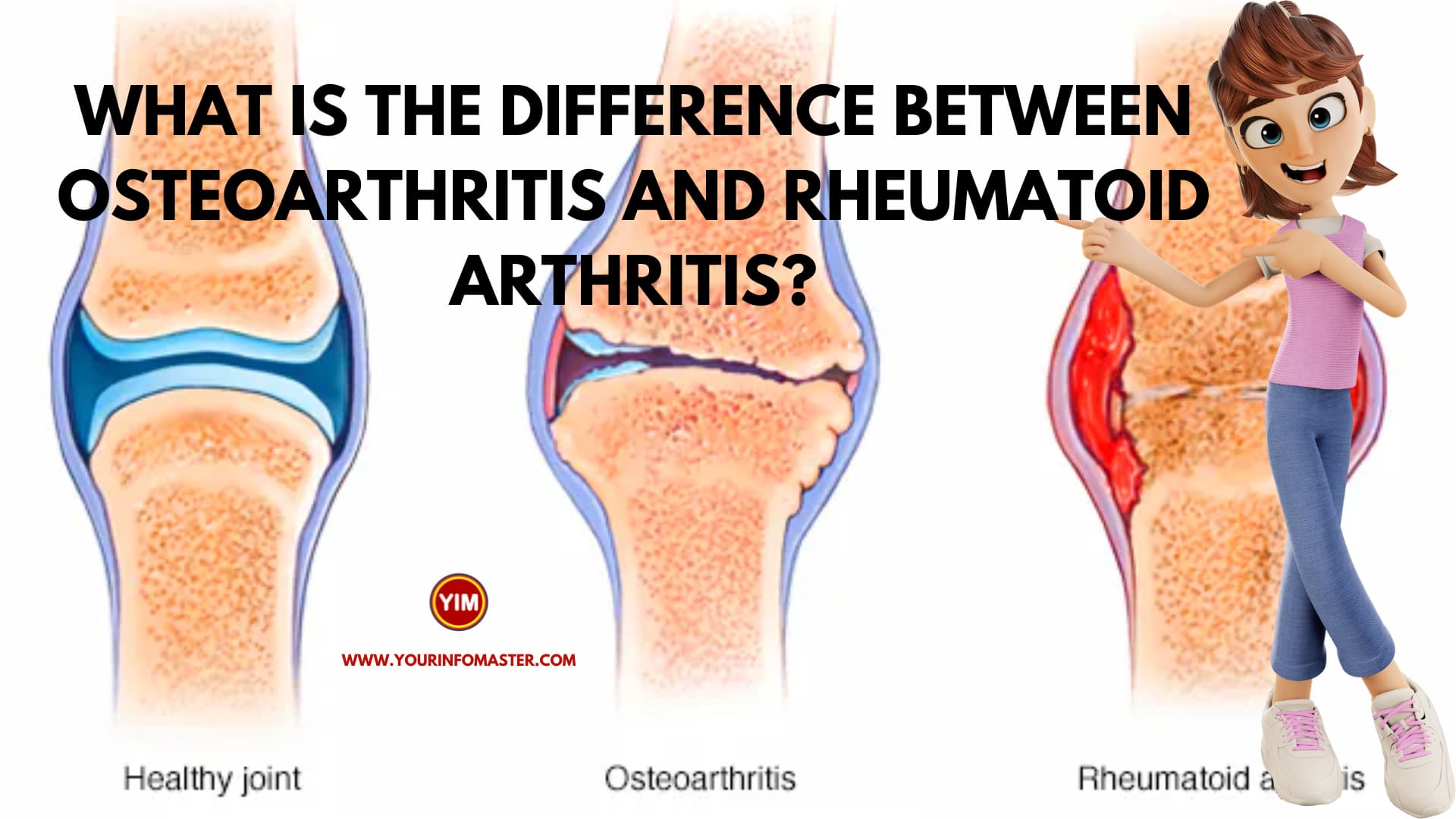I am going to explain the blog post “What is the difference between osteoarthritis and rheumatoid arthritis?“
When it comes to joint pain and inflammation, two of the most common conditions that people often hear about are osteoarthritis and rheumatoid arthritis. While both of these disorders affect the joints, they are quite different in their causes, symptoms, and treatment approaches.
Understanding the difference between osteoarthritis and rheumatoid arthritis is crucial for proper diagnosis and management. This blog post aims to provide a comprehensive comparison of these two conditions, highlighting the key differences between osteoarthritis and rheumatoid arthritis.
With a clear understanding of these differences, individuals suffering from joint pain can make informed decisions about their health and treatment options.
Check also: How to Fix ChatGPT Error Code 1020 Access Denied?
10 Differences between Osteoarthritis and Rheumatoid Arthritis
We will delve into the 10 most important differences between osteoarthritis and rheumatoid arthritis. By examining these distinctions, we hope to provide a clearer picture of what sets these two conditions apart and how they impact the lives of those affected by them.
This information will not only enhance your knowledge but also help you communicate more effectively with healthcare professionals when discussing joint pain and related concerns.
Here is a list of 10 differences between osteoarthritis and rheumatoid arthritis:
- Cause
- Onset
- Affected Joints
- Symmetry of Symptoms
- Morning Stiffness Duration
- Disease Progression
- Inflammation and Systemic Symptoms
- Diagnostic Tests
- Treatment Approaches
- Prognosis
Check also: Is ChatGPT Plus worth it?
Detail of 10 Differences between Osteoarthritis and Rheumatoid Arthritis
Here is the detail of 10 differences between osteoarthritis and rheumatoid arthritis:
Cause: Osteoarthritis is primarily caused by wear and tear of the joint cartilage over time, often due to aging, obesity, or injury. Rheumatoid arthritis, on the other hand, is an autoimmune disease where the immune system mistakenly attacks the synovial membrane lining the joints, causing inflammation and damage.
Onset: Osteoarthritis usually develops gradually and worsens over time, while rheumatoid arthritis can have a more sudden and aggressive onset, with symptoms sometimes appearing within weeks or months.
Affected Joints: Osteoarthritis tends to affect weight-bearing joints like the knees, hips, and spine, as well as the hands. Rheumatoid arthritis more commonly affects the smaller joints of the hands, wrists, and feet, but can also involve larger joints like the shoulders, elbows, and knees.
The symmetry of Symptoms: Rheumatoid arthritis typically presents with symmetrical joint involvement, meaning that if one joint is affected on one side of the body, the same joint on the other side will also be affected. Osteoarthritis, however, can be more asymmetrical in its presentation.
Morning Stiffness Duration: In osteoarthritis, morning stiffness typically lasts less than 30 minutes, while in rheumatoid arthritis, it can persist for more than an hour or even throughout the day.
Disease Progression: Osteoarthritis is generally a slowly progressive condition with periods of relative stability. Rheumatoid arthritis, however, can have a more unpredictable course, with periods of flare-ups and remissions.
Inflammation and Systemic Symptoms: Rheumatoid arthritis is characterized by inflammation, which can lead to systemic symptoms like fever, fatigue, and weight loss. Osteoarthritis does not typically cause systemic symptoms, as the inflammation is usually limited to the affected joints.
Diagnostic Tests: Osteoarthritis is primarily diagnosed through imaging studies like X-rays, which show joint space narrowing and bone spurs. Rheumatoid arthritis often requires blood tests to detect specific antibodies and inflammation markers, as well as imaging studies to assess joint damage.
Treatment Approaches: Osteoarthritis treatment focuses on managing pain, improving joint function, and slowing the progression of the disease through a combination of medication, physical therapy, weight management, and sometimes surgery. Rheumatoid arthritis treatment involves medications to suppress the immune system and reduce inflammation, along with pain management, physical therapy, and sometimes surgery. Early intervention is particularly important in rheumatoid arthritis to prevent joint damage and disability.
Prognosis: Osteoarthritis is generally a slowly progressive disease, with the severity of symptoms varying among individuals. Rheumatoid arthritis, however, can lead to significant joint deformity and disability if left untreated or not managed appropriately. While both conditions can impact the quality of life, rheumatoid arthritis often has more severe long-term consequences.
Check also: How to Fix ChatGPT Error in Body Stream?
Conclusion
In conclusion, while both osteoarthritis and rheumatoid arthritis involve joint pain and inflammation, they are distinct conditions with different causes, symptoms, and treatment approaches.
Understanding the difference between osteoarthritis and rheumatoid arthritis is vital for the proper diagnosis and management of joint-related issues.
If you or someone you know is experiencing joint pain, it is essential to consult a healthcare professional for an accurate diagnosis and appropriate treatment plan.
By being well-informed about these two conditions, you can make better decisions regarding your health and improve your overall quality of life.
See also: ChatGPT Internal Server Error: Causes, Symptoms, and Fixes
If you really enjoyed the article “What is the difference between osteoarthritis and rheumatoid arthritis?,” then I would be very grateful if you’d help it spread by emailing it to your friends or sharing it on Twitter, Instagram, or Facebook. Thank you!
Have you read “What is the difference between osteoarthritis and rheumatoid arthritis?“ Which of these blogs are you reading, and how is it similar to one of them?







